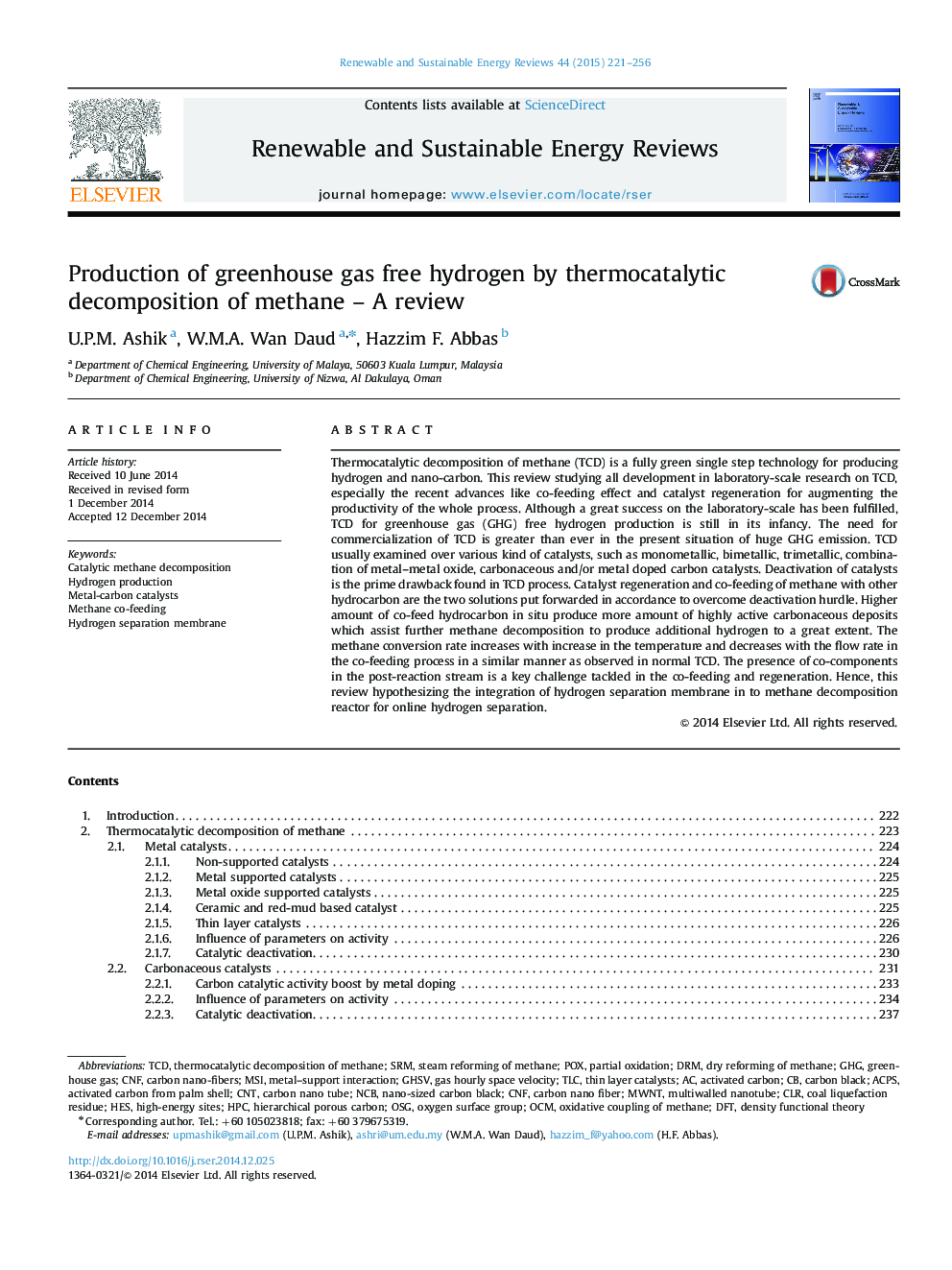| کد مقاله | کد نشریه | سال انتشار | مقاله انگلیسی | نسخه تمام متن |
|---|---|---|---|---|
| 8117175 | 1522341 | 2015 | 36 صفحه PDF | دانلود رایگان |
عنوان انگلیسی مقاله ISI
Production of greenhouse gas free hydrogen by thermocatalytic decomposition of methane - A review
ترجمه فارسی عنوان
تولید هیدروژن آزاد گازهای گلخانه ای توسط تجزیه ترککاتالتیک متان - بررسی
دانلود مقاله + سفارش ترجمه
دانلود مقاله ISI انگلیسی
رایگان برای ایرانیان
کلمات کلیدی
SRMThermocatalytic decomposition of methaneOSGMWNTAcpsNCBMSIDRMCLRCNFTLCGHSVTCDHPCPOXGHGCNTOCMDFT - DFTSteam reforming of methane - اصلاح بخار متانHES - او هستPartial oxidation - اکسیداسیون جزئیCatalytic methane decomposition - تجزیه متان کاتالیزوریoxidative coupling of methane - ترکیب اکسیداتیو متانHydrogen production - تولید هیدروژنDry reforming of methane - ریفرنگ خشک متانgas hourly space velocity - سرعت فضای ساعتی گازHydrogen separation membrane - غشای جداسازی هیدروژنCoal liquefaction residue - مانده مایع سازی زغال سنگMetal–support interaction - متابولیسم حمایتDensity functional theory - نظریه تابعی چگالیCarbon black - کربن سیاه Activated carbon - کربن فعالHierarchical porous carbon - کربن متخلخل سلسله مراتبیCarbon nano-fibers - کربن نانو الیافCarbon Nano Fiber - کربن نانو فیبرCarbon Nano Tube - کربن نانو لولهGreen-house gas - گاز گلخانه ای
موضوعات مرتبط
مهندسی و علوم پایه
مهندسی انرژی
انرژی های تجدید پذیر، توسعه پایدار و محیط زیست
چکیده انگلیسی
Thermocatalytic decomposition of methane (TCD) is a fully green single step technology for producing hydrogen and nano-carbon. This review studying all development in laboratory-scale research on TCD, especially the recent advances like co-feeding effect and catalyst regeneration for augmenting the productivity of the whole process. Although a great success on the laboratory-scale has been fulfilled, TCD for greenhouse gas (GHG) free hydrogen production is still in its infancy. The need for commercialization of TCD is greater than ever in the present situation of huge GHG emission. TCD usually examined over various kind of catalysts, such as monometallic, bimetallic, trimetallic, combination of metal-metal oxide, carbonaceous and/or metal doped carbon catalysts. Deactivation of catalysts is the prime drawback found in TCD process. Catalyst regeneration and co-feeding of methane with other hydrocarbon are the two solutions put forwarded in accordance to overcome deactivation hurdle. Higher amount of co-feed hydrocarbon in situ produce more amount of highly active carbonaceous deposits which assist further methane decomposition to produce additional hydrogen to a great extent. The methane conversion rate increases with increase in the temperature and decreases with the flow rate in the co-feeding process in a similar manner as observed in normal TCD. The presence of co-components in the post-reaction stream is a key challenge tackled in the co-feeding and regeneration. Hence, this review hypothesizing the integration of hydrogen separation membrane in to methane decomposition reactor for online hydrogen separation.
ناشر
Database: Elsevier - ScienceDirect (ساینس دایرکت)
Journal: Renewable and Sustainable Energy Reviews - Volume 44, April 2015, Pages 221-256
Journal: Renewable and Sustainable Energy Reviews - Volume 44, April 2015, Pages 221-256
نویسندگان
U.P.M. Ashik, W.M.A. Wan Daud, Hazzim F. Abbas,
